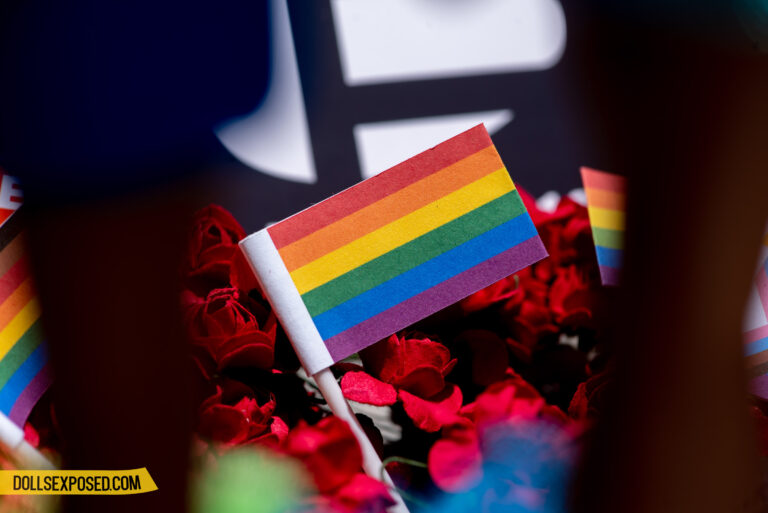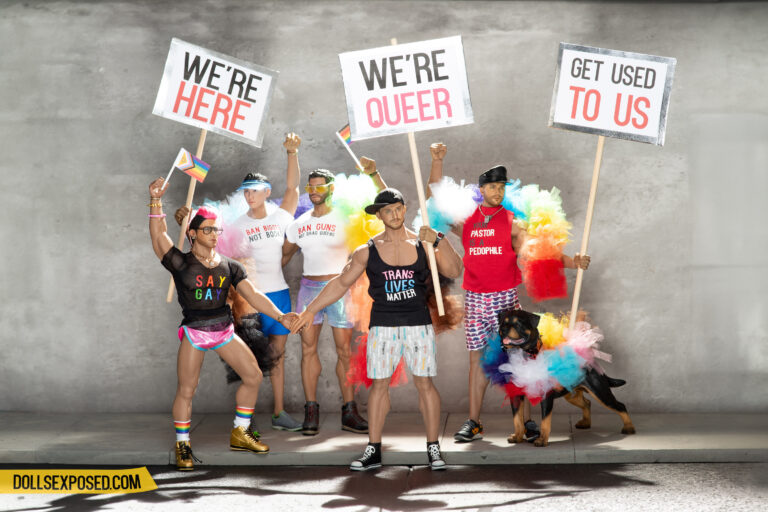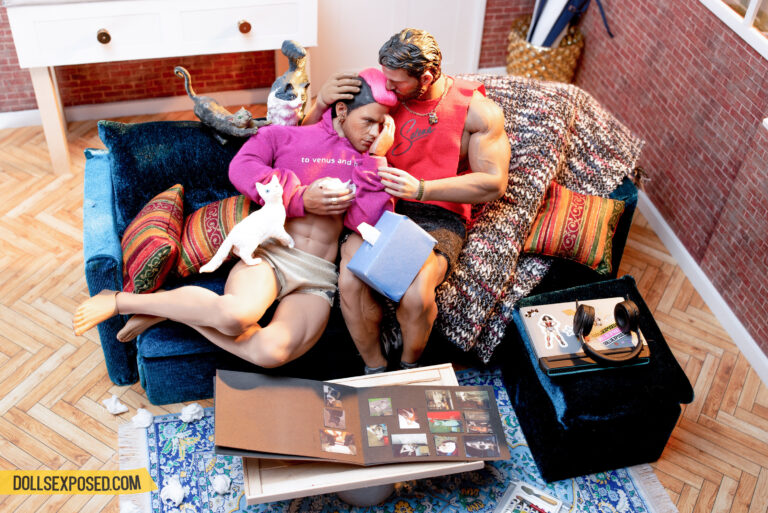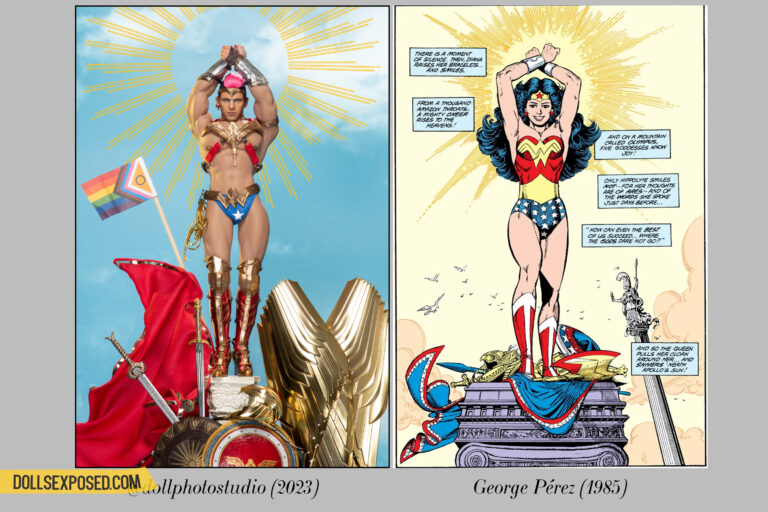The gay rainbow flag is one of the most recognizable symbols in the world. It is a symbol of pride, hope, and equality for the queer community. But how did the rainbow flag come to be?
The Classic Pride Flag

We owe this iconic symbol to Gilbert Baker, a young artist and activist based in San Francisco, who was tasked with designing the flag.
Baker wanted to create a symbol that would be both beautiful and meaningful. He chose the rainbow as a symbol of hope and diversity. Each color of the rainbow represents a different aspect of the queer community:
- Hot Pink: sex
- Red: life
- Orange: healing
- Yellow: sunlight
- Green: nature
- Turquoise: magic and art
- Indigo: peace
- Violet: spirit
The first gay rainbow flag was flown at the San Francisco Gay Pride Parade on June 25, 1978. The flag was an instant success, and it quickly became a symbol of the queer movement around the world. The flag originally had eight colors, but Hot Pink was dropped because there wasn’t enough fabric in this color to make the flags, especially when demand grew exponentially after Harvey Milk was assassinated on November 27, 1978.
Turquoise got the chop (quite literally) when the organizers of the 1979 SF Pride Parade wanted to split the flag into two to decorate each side of the route and they needed an even number of colors.
So now, we have red, orange, yellow, green, indigo (or royal blue), and violet as the Classic 2.0 Pride Flag.
The Classic 2.0 Pride Flag has been used in protests, marches, and rallies for decades. It has become a powerful symbol of the fight for equality and acceptance. The flag is a reminder that the queer community is strong and resilient, and that they will not be silenced.
In recent years, the gay rainbow flag has been adopted by corporations and other organizations as a symbol of their support for the queer community (to a varying degrees of sincerity).
While some people have criticized this trend, others see it as a sign of progress. The more visible the gay rainbow flag becomes, the more people will be aware of the discrimination and violence that the queer community still faces.
The More Color More Pride (Philly Pride) Flag
The Philly Pride flag was designed by Amber Hikes, who served as the executive director of the Philadelphia Office of LGBT Affairs from 2017 to 2019. The flag was unveiled in 2017 as part of Philadelphia’s annual Pride celebration.
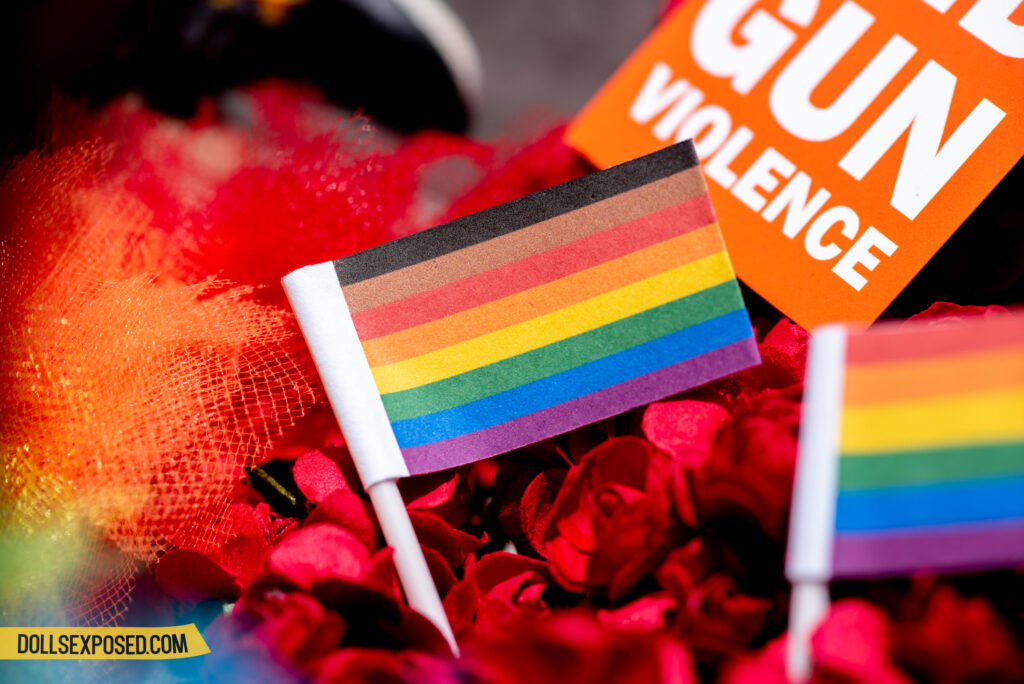
The black and brown stripes on the flag are intended to represent the contributions of queer people of color to the community. The Philly Pride flag was created in response to a longstanding history of discrimination and exclusion toward Black, Indigenous, and other People of Color (BIPOC) within predominantly white queer spaces.
The Progress Pride Flag
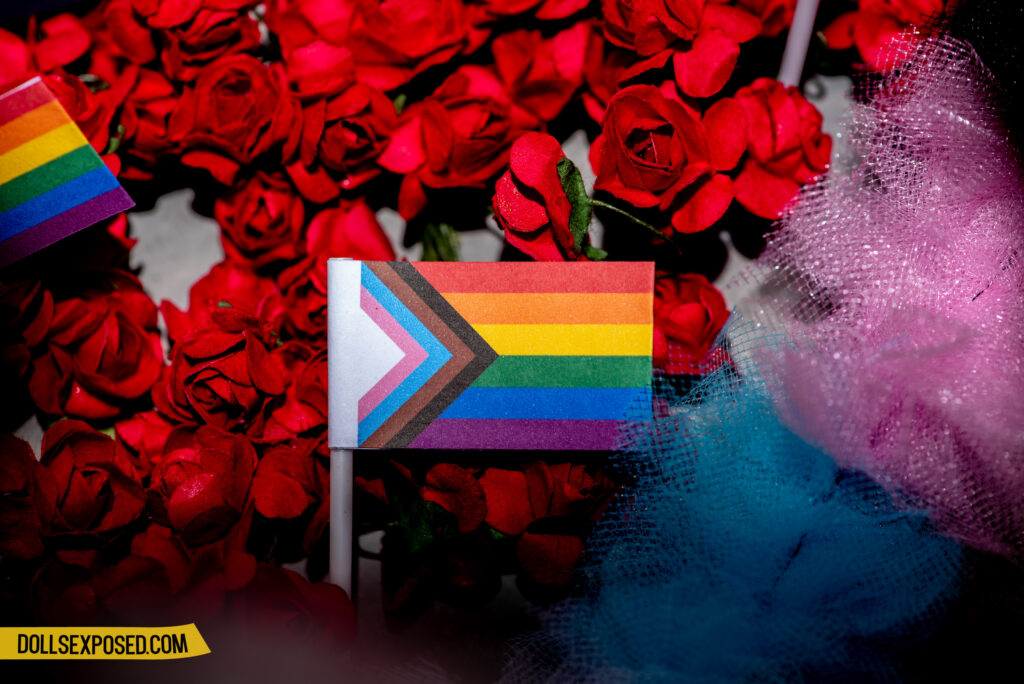
The Progress Pride flag was designed in 2018 by Daniel Quasar, a nonbinary American artist and designer. The flag is a redesign of the original rainbow flag, which was created by Gilbert Baker in 1978. The Progress Pride flag adds five arrow-shaped stripes to the bottom of the rainbow flag. These stripes represent black, brown, pink, light blue, and white. The black and brown stripes represent marginalized queer communities of color, while the pink, light blue, and white stripes represent the transgender community. The arrow shape of the new stripes is meant to represent forward movement and progress.
Quasar created the Progress Pride flag in response to what they saw as a need for a more inclusive symbol of the queer community. They felt that the original rainbow flag did not adequately represent the diversity of the community, particularly the experiences of queer people of color and our trans siblings. The Progress Pride flag is intended to be a more inclusive symbol that celebrates the diversity of the queer community and calls for continued progress in the fight for equality.
The Progress Pride flag has been met with mixed reactions. Some people have praised the flag for its inclusivity and its message of progress. Others have criticized the flag for being too complicated or for not being true to the original rainbow flag. However, the Progress Pride flag has become increasingly popular in recent years, and it is now flown at pride events and other gatherings around the world.
The Intersex Inclusive Progress Pride Flag

The Intersex Inclusive Progress Pride flag designed by Valentino Vecchietti, who added a purple circle over a yellow triangle to the left side of the flag. The new design was unveiled by the advocacy group Intersex Equality Rights UK in late May 2021.
It’s based on the Intersex Pride flag that was created in July 2013 by Morgan Carpenter of Intersex Human Rights Australia (then known as Organisation Intersex International Australia) to create a flag “that is not derivative, but is yet firmly grounded in meaning”.
The Intersex Inclusive Progress Pride flag is composed of a yellow background with a purple circle in the center. Yellow and purple were chosen as colors as they were viewed as free from gender associations and were historically used to represent intersex people. The circle is described as “unbroken and unornamented, symbolizing wholeness and completeness, and our potentialities.” The flag is freely available “for use by any intersex person or organization who wishes to use it, in a human rights affirming context.”
Bonus: glossary of abbreviations and terms
You may notice I rarely use the initialism LGBTQ or its variations and prefer “queer” instead.
Over the years, as the queer community strives to be more inclusive (as we should), “LGBT” has had many more letters added as a suffix. Here’s what the letters stand for:
L: Lesbian (gay women)
G: Gay (gay men)
B: Bisexual (those who are attracted to both men and women)
T: Transgender (those who feel their gender identity and expression don’t match their biological sex)
Additions:
Q: Queer (more on this later)
Q: Questioning (those who are currently exploring their gender identity and or sexual orientation)
I: Intersex (those who were born with chromosomes, genitalia, and or secondary sexual characteristics)
P: Pansexual (those who are sexually and romantically attracted to others regardless of their sex and gender identities)
T: Two-Spirited (a First American term for people who identify with a third gender that has a masculine and feminine spirit in one body)
A: Asexual (someone who has no or very little sexual attraction to any group of people, but may still have romantic feelings or affection towards others)
A: Ally (someone outside of the sexual orientation group or gender identity group who still supports that group; I’m a cisgendered gay man and I’m an ally of trans folk).
I understand that “queer” was, and in some cases is, used as a slur, but I’m a big proponent of word reclamation and I’m reclaiming this term.
queer (adjective):
1. strange or odd; unconventional.
2. not heterosexual.
3. (of a person) not conforming to conventional standards of behavior or appearance.
Those who lived through the usage of the word “queer” as a slur probably object to using it as a catchall term for LGBTQIPAT+ community because they have the first (and close second) hand experiences of the absolute fear and dread implied by the word.
As an immigrant whose first language isn’t English, I recognize that my privilege and upbringing shield me from the pain and trauma of the word. I’d happily use a different term in the presence of someone who’d rather not hear it.
The writer side of me also feels the repeating “LGBTQ” or “LGBTQIA” or “LGBTQ+” or versions of it can be tedious and pedantic. So, I use “queer” as a catchall term to describe the non-hetero and or non-cisgendered members of our community.
Being part of the queer community means I’m allowed to use it since it’ll never have a negative connotation. However, I do understand how non-queer people (and even allies) using the word “queer” can be seen offensive. This would be be akin to me saying the N-word or homophobic rappers using the F-word.
Pride 2023 is the Year of Resistance.
Click here to see how you can help, plus a list of organizations and indie queer doll creators that deserve your support.

Hey, you gorgeous thing!
Keeping this space sizzling for free isn’t easy (think: hosting costs, doll accessories, and lube—lots and lots of lube).
But we realized it’s almost impossible to keep going without your help. And we get it—times are tough, so any support you can offer means the world.
If we’ve made you horny, laugh, cum, or feel something special, why not give a little love back? 💖
Every donation keeps the smut (and culture) going—and trust us, at this point in our lives, we’re so grateful we’re able to produce this content regularly.
Thanks. You’re a doll. 😘
Dollsexposed showcases homoerotica and kink through twelve-inch doll photography. Their adventures in the doll world began in 2011 before establishing a home on dollsexposed.com eleven years later.
Dollsexposed's works have been displayed at the Seattle Erotic Art Festival, Los Angeles Kinky Art Show, and Los Angeles Leather Getaway.
If you enjoy this site, please consider tipping to keep the website afloat.
you may also enjoy:
Making Season 2: Production Notes
A look back to season two and what I learned (so far) about writing and producing fiction using sixth-scale doll photography.
The Day Chrissy Loses Everything, Part 3: MattNudity
After losing Wade, Manuel, and Takeshi in one fell swoop, Chrissy comes home to Matt. Third part of season 2 finale.
The Day Chrissy Loses Everything, Part 2: Manuel & Takeshi
Just minutes from Wade’s devastating declaration, Manuel finds Chrissy. Second part of season 2 finale.
The Day Chrissy Loses Everything, Part 1: Wade
A showdown at the ice cream social leads Wade to a heavy decision regarding Chrissy. First part of season 2 finale.
Happy Birthday, ChrissyNudity
It’s Chrissy’s birthday. Matt surprises him with a present and some bad news.
Locker Room ConfessionsNudity
Gar interrogates Chrissy about Matt whilst Takeshi gets handsy with Chrissy in the locker room.

